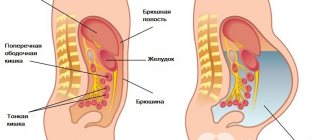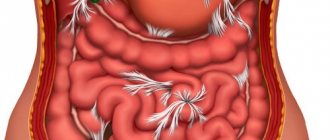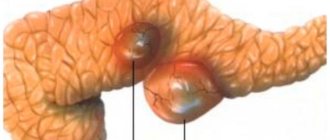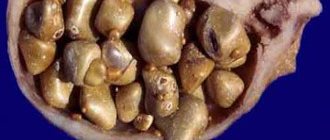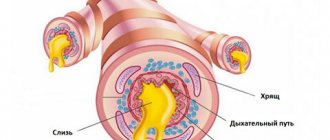Sarcomas are the general name for malignant tumors that are formed from different types of connective tissue. They are often characterized by progressive, very rapid growth and frequent relapses, especially in children. This behavior of sarcomas is explained by the accelerated development of connective and muscle tissue cells at a young age.
- Causes of sarcomas and risk factors
- Development of sarcoma
- Prevalence of sarcoma
- Symptoms
- Diagnostics
- Treatment of sarcoma
Sarcomas are divided into two large groups: soft tissue and bone.
Unlike cancer, which is a malignant neoplasm of the epithelium, sarcomas grow from connective tissue and are not associated with any specific organ, but can occur anywhere in the body. In everyday life, all malignant neoplasms are usually called cancer, but this is incorrect.
Bone sarcomas can develop both directly from bone tissue (paraosteal sarcoma, chondrosarcoma) and from tissues of non-bone origin (Ewing's sarcoma - from mesenchymal stem cells, angiosarcoma - from blood vessel cells, etc.). They can affect internal organs, skin, lymphoid tissue, and the central and peripheral nervous system. The classification, based on the type of tissue from which the tumor was formed, includes the following types:
- osteosarcomas grow from bone tissue;
- mesenchymomas - from embryonic ones;
- liposarcoma - from adipose tissue;
- myosarcoma - from muscle tissue;
- angiosarcomas - from blood and lymphatic vessels, etc.
In total, about 100 different types of sarcomas are known, each of which has its own characteristics of development, treatment and, accordingly, its own prognosis.
According to the degree of tissue maturity, they are divided into low, medium and highly differentiated. The degree of malignancy of the tumor, as well as the tactics of its treatment, depend on this feature: the less differentiated the tumor cells, the more aggressive the tumor and the more serious the prognosis.
Book a consultation 24 hours a day
+7+7+78
Leading clinics in Israel
Assuta
Israel, Tel Aviv
Ikhilov
Israel, Tel Aviv
Hadassah
Israel, Jerusalem
Note! According to statistics, about 80% of sarcoma cases are diagnosed on the lower extremities.
Given the seriousness of the disease and the high risk of death, the question arises about the contagiousness of such a disease. Fortunately, this disease is not contagious. You can get sarcoma due to a violation of the genetic code, chromosomal transformations.
Diagnosis of sarcoma in the presence of HIV is considered hemorrhagic sarcomatosis and is called angiosarcoma or Kaposi's sarcoma. Its characteristic signs are ulceration of the skin and mucous membranes, and it occurs as a result of the entry of herpes type 8 through lymph, blood (other secretions of the skin and saliva of the sick person) or through sexual contact. The occurrence of sarcoma in combination with HIV disease is possible with a sharp drop in immunity. Patients can also be diagnosed with AIDS or lymphosarcoma, leukemia, multiple myeloma or lymphogranulomatosis.
Treatment
In medical practice, the following methods for eliminating Kaposi's sarcoma are:
- Cryotherapy . A procedure that involves the use of liquid nitrogen or other substances that can freeze the affected areas. As a result of such actions, cancer is destroyed.
- Applications with prospidin (30%). Prospidin is a highly effective antitumor drug. It helps block the development of the primary tumor and reduces its size. In addition, it has anti-inflammatory and immunocorrective effects. Can be used in radiation and chemotherapy.
- Chemotherapy with interferon α. Interferon has the ability to support the immune system in the fight against cancer cells. The treatment procedure consists of daily injections intramuscularly or subcutaneously.
- Radiation therapy . Using high-energy, targeted beams, cancer cells are destroyed. In addition, such therapy helps reduce pain, bleeding and swelling. But it is also worth considering the side effects of this procedure.
Classification of the disease
Note! There are more than 100 types of sarcomas (in Latin - Sarcom). Sarcoma can be classified by origin, degree of malignancy, location, etc.
By origin they are divided into:
- tumors that form from hard tissues;
- tumors from soft tissue structures.
According to the development mechanism, there are two types:
- primary. In this case, the tumor develops from the tissues of the organ where the sarcoma is localized;
- secondary. This type contains cells that are not related to the organ where the tumor is located.
By degree of malignancy:
- highly malignant, which are characterized by rapid growth of tumor cells and division, they contain a small amount of stroma and they have a well-developed vascular system;
- low-grade, in which cell division occurs with little activity, they are well differentiated, contain few tumor cells, few vessels, and a lot of stroma.
By degree of differentiation:
- Gx – cell differentiation cannot be determined;
- G1 – well-differentiated sarcoma;
- G2 – moderately differentiated;
- G3 – poorly differentiated;
- G4 – undifferentiated.
The less differentiation, the higher the malignancy of the sarcoma neoplasm.
The classification of the disease according to ICD 10 code looks like this:
- C45 - mesothelioma. It grows from the mesothelium, spreads to the pericardium, pleura, peritoneum;
- C46 - Kaposi's sarcoma. It affects blood vessels and red-brown spots may appear on the skin. Refers to extremely aggressive tumors;
- C47 is a tumor of the peripheral and autonomic nervous system. More often develops in the lower extremities, in the chest, neck, hips, pelvis;
- C48 - neoplasms of the retroperitoneal space and the peritoneum itself;
- C49 - malignant neoplasms of soft and connective tissue of other types.
According to location - usually sarcomas develop in the area:
- intestines and stomach (stromal tumors);
- head, neck, bones;
- female genital organs (uterus) and mammary glands;
- peritoneum and retroperitoneal space;
- soft tissues of the torso and limbs.
By fabric type:
- liposarcoma developing from adipose tissue;
- fibrosarcoma (dermatosarcoma), is a fibroblastic (myofibroblastic) formation;
- fibrohistiocytic tumor of soft tissues - plexiform and giant cell;
- leiomyosarcoma, formed from smooth muscle tissue;
- glomus tumor (pericytic or perivascular);
- rhabdomyosarcoma of the skeletal muscles;
- myosarcoma (from muscle tissue);
- angiosarcoma and epithelioid hemangioepithelioma, which are considered vascular neoplasms of soft tissue, blood and lymph;
- extraskeletal osteosarcoma, mesenchymal chondrosarcoma – osteochondral tumors;
- mesenchymoma (embryonic tumor);
- stromal (malignant) tumor of the gastrointestinal tract;
- neurofibrosarcoma (from nerve sheath cells, meningeal);
- tumor of the nerve trunk: peripheral, granulocellular, ectomesenchymoma, triton tumor;
- unclear differentiation: clear cell, desmoplastic round cell, synovial, intimal;
- undifferentiated (unclassified): spindle cell tumor, pleomorphic, round cell, epithelioid.
- cartilage tissue – chondrosarcoma: central, primary or secondary, peripheral (periosteal), clear cell, mesenchymal;
- bone tissue - osteosarcoma, Ewing's sarcoma, chondroblastic, fibroblastic, periosteal and superficial high-grade malignancy, paraosteal, osteoblastic, telangiectatic, small cell;
- hematopoietic tissue - plasmacytoma (myeloma), malignant lymphoma;
- giant cell: malignant giant cell;
- tumor formation of the chord - sarcomatoid chordoma.
Stromal is a tumor that develops most often in the uterus and is characteristic of the endometrium. A common cause of its occurrence is radiation. Also, the cause of this type of sarcoma can be abortions and injuries during childbirth, polyposis. The disease can manifest as pain and bleeding.
Spindle cell. This type of tumor consists of spindle-shaped structures. Requires differentiation from fibroma. The nodes of this tumor are dense and fibrous in structure and are most often located on the skin, mucous membranes, fascia and serous integument. If detected early, this tumor has a favorable prognosis.
Malignant is a soft tissue formation, has a high recurrence rate (over 40%), usually located deep in the muscle tissue. In the initial stages, the disease develops asymptomatically.
Pleomorphic. This type of disease usually develops in the extremities (legs, fingers or toes), and much less frequently on the torso. Such a tumor is often detected only when it grows to a large size (more than 10 cm). This tumor looks like a formation with a dense lobular structure, which contains areas of hemorrhage of dead tissue. This type of sarcoma is characterized by low patient survival - about 10%.
Polymorphocellular refers to the primary cutaneous ones, which are formed along the soft tissue periphery. When this type of sarcoma grows, it manifests itself and metastasizes through the lymphogenous route. They are treated only through surgery.
Undifferentiated. Although this type of sarcoma is difficult to classify, it belongs to tumors of unknown tissue origin, but is treated as rhabdomyosarcoma.
A histiocytic tumor has cells of a polymorphic structure. This type of disease has a poor prognosis. Most often it affects soft tissue structures and gastrointestinal tract organs. When treated, reacts negatively to therapeutic effects.
Round cell.
This type of sarcoma contains round cell structures, is considered a highly malignant tumor, and spreads into soft tissue structures and skin cells.
Fibromyxoid is low-grade and can be diagnosed in patients of any age. It is usually located on the hips, shoulders, and torso. This type of tumor grows slowly and practically does not metastasize.
Lymphoid affects immune structures and has polymorphic symptoms. It is characterized by enlarged lymph nodes, autoimmune anemia, and eczema-like skin lesions. The tumor can compress the vessels, which provokes the appearance of necrosis.
Epithelioid most often affects the extremities, mainly in young patients. This neoplasm belongs to a type of synovial sarcoma.
Myeloid sarcoma consists of myeloblasts of the leukemic type, most often located in the bones of the skull, intraorganic structures, and lymph nodes.
Clear cell is a fasciogenic formation, located in the head, neck, torso, spreads into soft tissue structures, grows slowly, metastasizes, and often recurs.
Neurogenic is most often formed on the legs, develops slowly, has spindle-shaped cells, and is limited to other tissues. Therapy is exclusively surgical intervention, the prognosis is favorable. Survival rate is about 80%.
Don't waste your time searching for inaccurate cancer treatment prices
*Only upon receipt of information about the patient’s disease, a representative of the clinic will be able to calculate the exact price for treatment.
Kinds
In the practice of studying Kaposi's sarcomotosis, four types of the disease are distinguished. The location, degree of damage, treatment and diagnostic features depend on the specific type. It becomes obvious that to fully understand this oncology, it is necessary to analyze each option separately.
Look at the photo to see how different types of skin cancer manifest themselves. In this article, symptoms of spleen lymphoma.
Follow the link https://stoprak.info/vidy/golovy-i-shei/mozg/na-kakie-simptomy-obratit-vnimanie.html symptoms and signs of head cancer.
So, Kaposi's sarcoma can manifest itself in the following types:
- Classic. Tumors form on the feet, hands and legs. In rare cases, tumors may appear in the ear, on the scalp, or on the mucous membrane and eyelids. The manifestations of the disease are symmetrical, usually do not cause any symptoms, but may be accompanied by sensations of itching and heat.
The variety under consideration involves the division into three more forms: spotted, papular and tumor. The first is characterized by spots up to 5 millimeters of bluish or brownish tints. They have an irregular border and a smooth surface.
The second form is distinguished by spots in the form of spheres up to 1 centimeter, which have a dense consistency. The surface can be smooth or rough. As for the tumor type, it appears in the form of nodes up to 5 centimeters in diameter with a reddish-brown color and soft consistency.
During the course of the disease, the nodes unite and ulcerate. In most cases, the classic type of sarcoma is benign and can be asymptomatic for more than 10 years.
- Endemic. First of all, oncology affects internal structures. In particular, damage to the lymph nodes occurs without any manifestations on the surface of the skin.
The rashes themselves take on an asymmetrical shape with a reddish tint. Patients are susceptible to pain, heat, and increased sweating. Endemic sarcoma develops very aggressively.
- Epidemic. This species is often associated with the human immunodeficiency virus, since the epidemic form is one of its symptoms. The rash is localized on the tip of the nose, oropharynx and head.
It appears in the form of small asymmetrical and reddish spots. As the disease progresses, the rash becomes ulcerated and the lymph nodes become enlarged. The disease is quite aggressive, which causes high mortality - about 80% of the total number of cases.
- Immunosuppressive. It is characterized by malignancy, develops and spreads in a short time. The main reason for the occurrence is a malfunction of the immune system, which is caused by the use of cytostatics and immunosuppressants.
This type manifests itself in a nodular form, subsequently rapid transformation into a tumor occurs. This sarcoma may regress if immunosuppressive therapy is stopped. This consequence is explained by the fact that the functionality of the immune system is restored and gradually returns to normal.
Photo: initial stage
Stages of the disease
The development of sarcoma can be divided into 4 stages:
- Stage 1 is characterized by the presence of a tumor in the tissues of the organ where it formed;
- at the second stage, the tumor begins to spread inside the organ, interfering with its functioning, the tumor increases, but there is no metastasis;
- on the third, the tumor grows into nearby tissues and lymph nodes;
- Stage 4 (last) has unfavorable prognosis. The tumor grows to a large size, puts strong pressure on neighboring structures and metastasizes. At grade 4, survival rate is very low
Definition
Kaposi's sarcoma is an oncological disease that is accompanied by the development of malignant neoplasms on the skin surface, lymph nodes, oral mucosa, and internal organs. Such tumors are formed from vascular cells as spots of red-brown or bluish color with pronounced boundaries.
Causes of the disease and risk factors
The exact causes of sarcomas have not been established, but there is a connection between the presence of certain factors and tumor formation:
- heredity (genetic predisposition, presence of chromosomal pathologies);
- radiation exposure;
- influence of carcinogenic substances;
- long exposure to the open sun (visiting a solarium);
- viruses (papillomavirus, herpesvirus, Epstein-Barr virus, HIV);
- work in hazardous production;
- Immune failures that can cause the development of autoimmune pathologies;
- presence of precancerous conditions;
- carrying out immunosuppressive and polychemotherapy (10%);
- smoking;
- organ transplant operations (75% of cases);
- hormonal disruptions during puberty.
These factors can cause uncontrolled proliferation of connective tissue cells.
Sarcoma in children
Sarcoma in adolescents and children grows rapidly and often relapses, due to the fact that muscle and connective tissue actively grows at this age. This disease is in 2nd place after cancer among cancers diagnosed in children and which lead to death.
Origin of the disease
Modern medicine is not able to name the exact causes of the disease, but the relationship between individual factors that provoke neoplasms has been proven:
- Damage. After various injuries, the body begins active recovery, but as a result, the defense cannot detect undifferentiated cells in time. They degenerate into a malignant formation (cuts, severe injuries, fragments remaining in the wound, final stage burn or surgery).
- Chemicals and derivatives of trace elements (mercury, asbestos, lead, benzene, ammonia, aromatic amines). A mutation occurs at the level of genetic cells.
- Exposure to hazardous particles. Herpes virus type eight and HIV infection can change genetic cells and cause their mutations.
- Active growth (hormone maturation). During this period, active cell division occurs, so immature cells may be affected. The most common neoplasm is of the femur.
Osteogenic sarcoma
The pathology is observed mainly in young people and affects maturing cells. In children, it is diagnosed as acute bone marrow leukemia due to gene mutation and heredity. A child's cells can mutate in utero as a result of exposure to hazardous substances in the pregnant woman's body.
General symptoms of the disease
The symptoms of sarcoma depend on its location in vital organs. The characteristics of the primary cells and the formed tumor itself influence the nature of the symptoms.
The first signs of sarcoma are the visible size of the tumor, as it grows quickly - sarcoma is a fleeting disease.
The earliest pain to appear is in the joints and bones (usually at night), which cannot be relieved by analgesics.
Symptoms of sarcomas of various organs:
Liver
It is rarely diagnosed and manifests itself with symptoms in the area of the right hypochondrium. Patients lose weight, the skin turns yellow, and hyperthermia may occur in the evenings;
Stomach
The onset of the disease is always asymptomatic and the disease is usually detected incidentally. Dyspeptic disorders such as nausea, heaviness, flatulence and bloating appear. Signs of exhaustion appear, the patient feels tired, depressed, irritable;
Intestines
Accompanied by pain in the abdomen, nausea, lack of appetite, disturbances in intestinal function, discharge of a bloody-mucosal structure from the rectum, defecation, exhaustion of the body;
Kidneys
Has pronounced hematuria, pain at the location of the tumor, upon palpation it can be felt, blood is observed in the urine;
Retroperitoneal space
Sarcoma can grow to large sizes, compressing nearby tissues, destroying the roots of nerve endings, elements of the spine, this is complemented by intense pain in the corresponding places. Sometimes this type of sarcoma can cause paralysis or paresis.
Spleens
In the early stages it may not manifest itself in any way, but with the growth of formation, and the subsequent decay, intoxication occurs (low-grade fever, anemia and progressive weakness. The following may also occur: a constant feeling of thirst, lack of appetite, apathy, vomiting syndrome, frequent urge to urinate;
Pancreas
It is characterized by pain, hyperthermia, decreased or loss of appetite, jaundice, intestinal dysfunction - diarrhea (or constipation), nausea and vomiting symptoms. Sarcomas of those organs that are located in the abdominal cavity usually have similar symptoms.
Organs of the sternum
Tumors of this location are more often formed as a result of the appearance of metastases from other primary foci. Symptoms vary depending on the location.
Rib sarcoma
There is pain in the area of the ribs, sternum and nearby tissues, over time the pain intensifies, even anesthetics cannot cope with it. You can feel a small swelling on the ribs, which feels painful when pressed. The patient is worried about the following symptoms: excessive irritability, excitability, causeless anxiety, anemia, fever, local hyperthermia, breathing problems;
Lungs
Excessive fatigue, shortness of breath, hoarseness, pleurisy, signs of colds, prolonged pneumonia may occur;
Heart and pericardium
Hyperthermia, sudden weight loss, joint pain, weakness are observed, rashes may appear on the body and limbs, and a clinical picture of heart failure is revealed. Swelling of the face and upper extremities may occur. When the sarcoma is in the pericardium, symptoms suggest the presence of hemorrhagic effusion and tamponade;
Esophagus
Swallowing disorders occur. The pain is concentrated behind the sternum, but can radiate to other places. Inflammation of the walls of the esophagus always occurs. Anemia, weakness, and weight loss also occur. This pathology leads to complete exhaustion of the patient.
Mediastinum
The tumor affects all tissues of the mediastinum, compresses organs and grows into organs. When a tumor grows into the pleura, exudate appears in its cavities.
Spine
Symptoms depend on its location, for example, in the cauda equina, thoracic, cervical or lumbosacral regions.
Spinal sarcoma is a malignant neoplasm of the spinal cord and adjacent structures. The seriousness of the consequences of this tumor lies in the risk of compression or damage to the spinal cord (or its roots).
All lumbar tumors have common symptoms:
- rapid tumor growth (in less than a year);
- in the area affected by the tumor, constant pain is felt that is not relieved by anesthetics;
- there are restrictions on the mobility of the vertebrae affected by the tumor, which forces patients to take a certain body position;
- complications of a neurological nature, for example, paresis (restrictions in motor activity), paralysis, dysfunction of the pelvis (this is one of the first to manifest itself).
Brain
Symptoms of brain sarcoma:
- strange headaches, frequent dizziness (loss of consciousness is possible), movements are uncoordinated;
- behavioral disorders, mental disorders;
- seizures of an epileptic nature are possible;
- visual disturbances are temporary, but there is a high risk of optic nerve atrophy;
- the occurrence of paralysis - partial or complete.
Ovary
The tumor (adenosarcoma) is large and rapidly growing. Scanty symptoms are possible, such as aching pain, the lower abdomen may pull, menstrual irregularities occur, and sometimes ascites is possible. Sarcoma is often bilateral and develops rapidly.
Eyes
They usually develop in the upper parts of the orbit and are more often diagnosed in children. Tumors grow rapidly and increase in size. There may be a feeling of fullness and some soreness in the eye socket. The eyeball is limited in movement and can move, and exophthalmos often develops.
Blood and lymph
Lymphosarcoma is usually B-cell in nature and the course of the disease resembles acute leukemia. With sarcoma of the circulatory (lymphatic) system, patients may suddenly lose weight, feel weak, experience frequent dizziness, the body is quickly depleted, and the immune system is suppressed.
Larynx
This sarcoma is characterized by difficulty swallowing food, and the voice becomes hoarse. If the tumor is located under the throat ligaments, an abnormal narrowing of the esophagus and respiratory tract occurs.
Prostate
Prostate sarcoma is aggressive, develops rapidly, and characteristic symptoms appear when it reaches a large size or when it metastasizes to nearby structures. Symptoms are usually as follows: frequent urge to urinate and difficulty urinating, hyperthermia, severe pain in the lower abdomen and anus, sudden weight loss and exhaustion of the body.
Would you like to receive an estimate for treatment?
*Only upon receipt of data on the patient’s disease, a representative of the clinic will be able to calculate an accurate estimate for treatment.
Complications
Skin sarcoma, spreading through surrounding tissues, leads to the development of complications:
- compression, disruption of the functions of surrounding tissues;
- impaired lymphatic drainage, elephantiasis;
- constant bleeding when the tumor disintegrates;
- addition of infection;
- deformation of limbs, impaired motor functions.
The most dangerous but common complication is metastasis - the spread of malignant cells throughout the body and the formation of secondary tumors.
Diagnosis of the disease
The diagnosis of the disease is made using:
- MRI or CT;
- radiography;
- Ultrasound;
- radionuclide research;
- neurovascular or morphological diagnostics;
- biopsy etc.
Diagnosis of sarcoma begins with studying the patient's medical history and a personal consultation with a doctor, where the disease is diagnosed by external signs: severe exhaustion, pale skin color and transformation of its color over the growing tumor, swelling of the face, swollen veins on the surface of the head, etc.
Laboratory tests are mandatory. These include:
- biopsy using histology using a microscope;
- cytogenetic research method;
- a general blood test that will show deviations in the level of hemoglobin and the level of red blood cells, leukocytes, platelets, ESR
- biochemical blood test, which shows an increased amount of lactate dehydrogenase;
- The tumor markers used are different when sarcoma of a specific organ is suspected (as in cancer).
Forecast
The prognosis of Kaposi's sarcoma is determined by the form of the disease, the individual characteristics of the patient, and the state of the immune system, in particular. If the body’s defenses have potential, then with quality treatment a favorable outcome can be achieved.
Otherwise, even at the first stage, the prognosis is not in favor of the patient - about 40% of patients die in just a few months . In this case, therapeutic measures can only delay death. It is worth remembering that everything is determined by immunity status. Therefore, for people with AIDS, the occurrence of sarcoma is considered extremely dangerous.
We recommend watching a video in which a specialist talks about the course of Kaposi's sarcoma in people not infected with HIV:
If you find an error, please select a piece of text and press Ctrl+Enter.
How can sarcoma be cured?
Treatment of the disease is most often carried out by surgical intervention, and is supplemented with chemotherapy or radiation therapy. Combination therapy provides maximum effectiveness and increases survival by up to 70%.
Specific methods are used depending on the location, type and stage of the tumor, the general health of the patient and his age. When prescribing chemotherapy, medications are selected individually, depending on each person.
Surgery for aggressive sarcoma is performed in the initial stages to excise all tumor cells and to exclude the occurrence of metastases. At the same time as the tumor, several centimeters of healthy tissue are excised, without affecting the nerves and blood vessels and preserving the functionality of the organ.
Surgery is not performed if:
- the patient's age is over 75 years;
- the patient has severe diseases of some organs (heart, liver or kidneys);
- if the tumor is large and cannot be removed.
In addition to the above methods, external beam radiation therapy is used according to special programs that plan the irradiation areas and calculate the strength and dose of impact on the area of the oncological process.
Brachytherapy is used for sarcomas of various locations. This method accurately irradiates the sarcoma with a large dose of radiation without damaging normal tissue; sometimes brachytherapy can replace surgery and radiation.
Traditional methods
Treatment of sarcoma using traditional methods is part of complex therapy. For malignant sarcomas, infusions, decoctions, and poultices from the following herbs and plants are used: common hops; black henbane, spotted hemlock; poppy; evading peony; white water lilies; European wormwood; greater celandine; saffron seed; tall ash and others.
Diet for sarcoma
The diet should consist of: a large amount of vegetables, herbs and fruits, sprouted cereal seeds, fermented milk products, boiled lean meat, cereals, dried fruits, wholemeal bread products, vegetable oils.
Smoked meats should be excluded from the diet, as they are sources of carcinogens, alcohol and beer (yeast feeds cancer cells with carbohydrates). Sour berries and fruits are excluded from the menu: lemons, lingonberries, cranberries, due to the fact that tumor cells actively grow in an acidic environment.
Food
Nutrition for sarcoma must be correct. Food should be taken 4-5 times a day, in small portions. Eliminate snacks and fast food completely. Additionally, take vitamins A, B, C, E and minerals. Preference in products is given to cereals, vegetables and fruits. Drink freshly squeezed juices in the morning.
Pork, chicken or beef liver, as well as carrots, broccoli, cottage cheese, and yolk are rich in vitamin A, which improves immunity.
Regular consumption of cereals: buckwheat, millet, corn, oatmeal, as well as all types of nuts normalizes cell function. And products such as tomatoes, cottage cheese, mushrooms, spinach, and fermented milk products promote cell renewal and growth.
It is recommended to consume foods containing vitamin C and E. They remove toxins from the body and neutralize free radicals.
Smoked meats, sweets and foods containing tannin are excluded from the diet. Avoid acidic foods; tumor cells multiply well in an acidic environment.
Sarcoma prognosis
Prognosis for the disease depends on the stage of the tumor process, its shape, location, and the presence of metastases. If the tumor is diagnosed at the last stage, then the patient has very little time to live.
With sarcoma of soft tissues and extremities, the 5-year survival rate is about 75%, with cancer on the body - up to 60%.
The lower the differentiation of tumor cells, the more difficult it is for the patient to cure. This depends on the fact that an immature cell usually gives metastases. But modern medications can greatly reduce the risk of death. In 90% of cases, timely and adequate therapy greatly increases life expectancy or completely cures the patient.
Description of the pathology
Typically, sarcoma is an elastic tumor, pale pink in color. It has no clear boundaries and gradually turns into normal tissue. On X-ray it is difficult to distinguish it from carcinoma; the final diagnosis is determined on the basis of biopsy and histological examination.
The main distinguishing feature of sarcoma is rapid, sometimes rapid, explosive growth, a high degree of aggressiveness, and active metastasis. It can take only a few weeks from the first symptoms to death.
Not all sarcomas behave this way, but most of them do. And although it is not cancer, it is often even more dangerous than cancer.
Prevention
There are no specific preventive measures that help avoid the development of sarcoma or other malignant tumors.
But there are a number of rules to reduce the likelihood of cell degeneration:
- avoid prolonged exposure to the sun;
- qualitatively treat skin diseases;
- strengthen immunity;
- use protection when in contact with toxins and chemicals;
- avoid injury to the skin.
People who have a hereditary predisposition and have reached the age of 40 need to undergo regular cancer screening - this will identify the disease at an early stage and prevent the development of metastases.
Be healthy!


